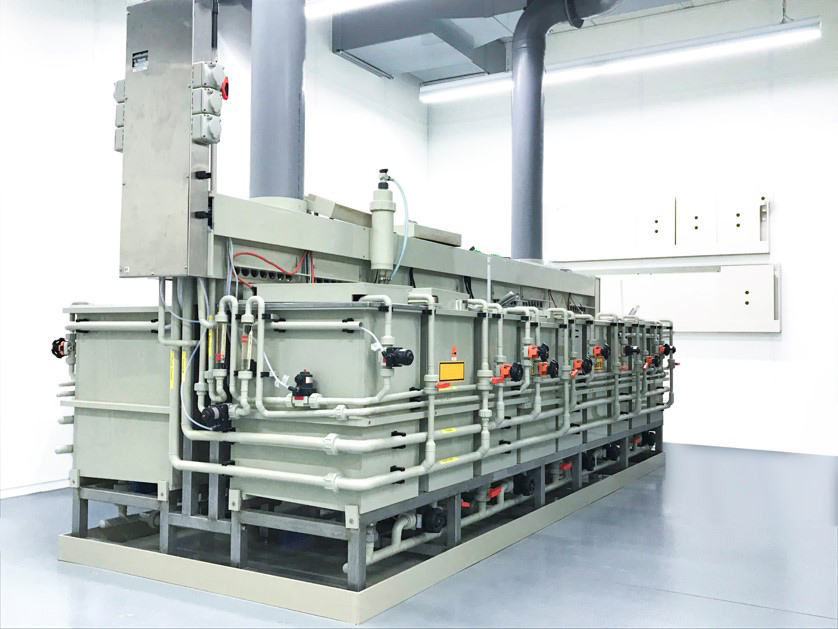Electroplating or galvanic refers to the electrochemical deposition of metallic precipitates, i.e. coatings on substrates (workpieces) in an electrolytic bath.
In electroplating, an electric current (direct current) is passed through an electrolytic bath. At the positive pole (anode) there is usually a metal such as copper or nickel, which is dissolved and transferred to the negative pole (cathode). The metal ions dissolved in the electrolytic bath are deposited by reduction on a workpiece that is electrically connected to the negative pole and thus serves as a cathode. Alternatively, the metal ions can also be contained in the electrolyte as a solution. The metal ions are deposited relatively uniformly on the workpiece at the negative pole and the layer thickness increases over time. Often, a pretreatment of the substrate is necessary before the galvanic process.[1]
Electroplating (also galvanostegie, English electroplating) is the most common application of electroplating. This coating process is used to produce metallic coatings on substrates.
The second area of electroplating is electroforming (also galvanoforming or galvanoforming, English electroforming). In this process, thicker layers of metal can be used to create solid metal objects. The process was used from the 19th century to produce artistic sculptures and casting moulds. Today it is used in mold making for injection molding of plastics and, more recently, in microsystems technology as microgalvanoforming, see lithographic-galvanic imprinting technique (LIGA).
On the one hand, the term galvano refers to a printing process in which the wooden printing block is replaced by a galvanically produced facsimile printing plate. On the other hand, galvano also refers to copies of coins or medals, as well as occasionally to sculptures that have been produced by galvanic means.
The application of low-frequency (“galvanic”) current in medical galvanotherapy is also misleadingly referred to as galvanization.[2]

